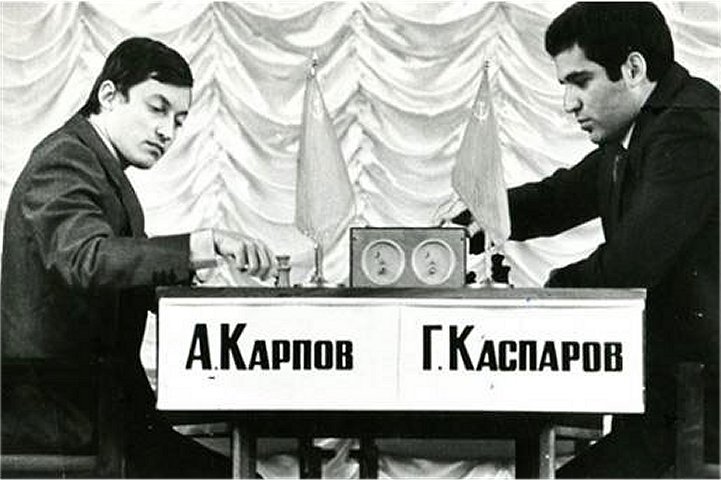


The 27th game of the 1st World Championship match 1984/1985 between defending champion Anatoly Karpov and challenger Garry Kasparov is legendary. The match began on September 10, 1984 and ended on February 13, 1985, the winner was to be the first to win six games, draws did not count. But after only nine games Karpov was already leading 4-0 and the match seemed to be decided. However, then followed a series of 17 draws, some of them very short and boring, until Karpov finally managed to win the 27th game, which gave him a 5-0 lead.
But in the next 21 games Karpov was unable to win another game and to win the match, and after 48 games the match was aborted without a winner though Karpov still led 5-3.
The second World Championship match between Karpov and Kasparov began six months later, on September3, 1985. This match went over 24 games and Kasparov won 13-11 to become new World Champion.
However, the 27th game of the 1st match between these two great rivals is not only legendary because it was Karpov's last victory in the 1st World Championship match, but also because Karpov seemed to demonstrate his great technical skills in this game. After surprising Kasparov in the opening, Karpov managed to outplay his opponent in a seemingly equal and rather harmless position and eventually gained material and won a pawn. Particularly stunning was Karpov's paradoxical 17th move (17.Rfc1): White put his rook on the c-file where it seemed to be blocked by a white pawn on c3. On first sight this rook move appeared to be senseless but it soon turned out to be quite dangerous.
Karpov's technique is legendary, and after winning the pawn he seemed to convert his advantage smoothly. But as Jan Timman reveals in his fine book The Longest Game, an insightful and gripping account of the five World Championship matches between Karpov and Kasparov, Kasparov did not think that Karpov handled the technical phase of this famous game particularly well.
So Karsten Müller decided to take a close look at this encounter and invites ChessBase readers to join his search for the truth. Is this endgame – as has been generally assumed so far – really another example of Karpov's outstanding technique or is Kasparov right when he claims that the endgame contains a number of mistakes?
Share your analyses and findings in the commentary!
| Advertising |